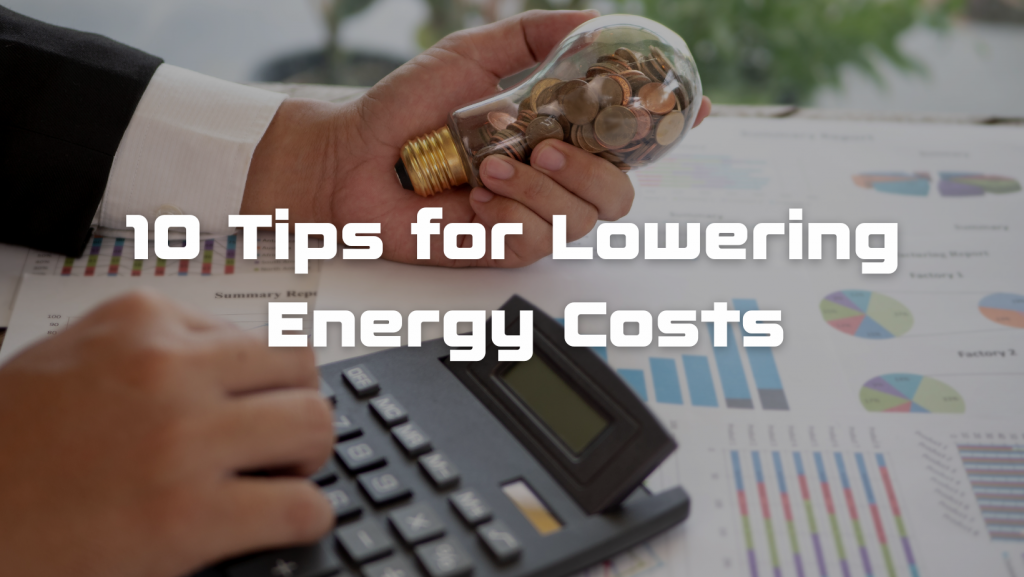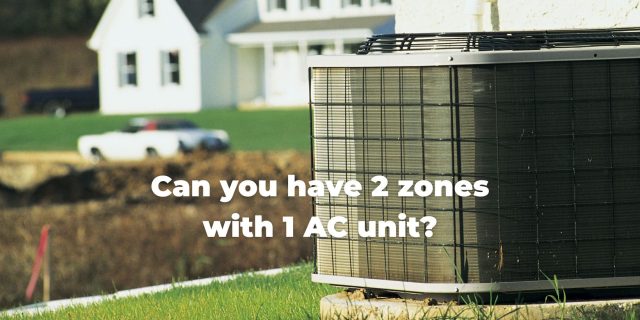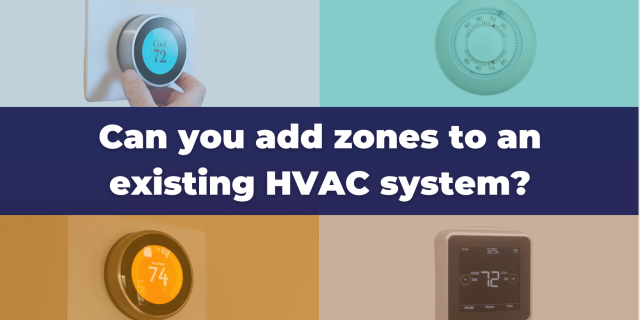
10 Tips for Lowering Energy Costs

Are you looking for ways to reduce your monthly energy costs? With rising utility bills, finding ways to save money on energy is becoming increasingly important. Luckily, there are many simple and effective ways to make your home more energy efficient. From upgrading your HVAC system to improving insulation, these 10 tips will help you lower your energy costs and create a more comfortable home environment.
1) Seal Ductwork
Conditioned air can escape through joints in the ductwork, causing your HVAC system to work harder and use more energy. To combat this issue, seal any leaks or gaps in your ductwork using duct tape or mastic sealant. This simple step can lead to significant savings on your energy bills.
2) Install a Programmable Thermostat
A programmable thermostat can save 10% a year, on average, when using setback temperatures. Additionally, pairing smart thermostats with HVAC zoning means you can adjust your home’s temperature according to your schedule and usage patterns. Then the heating and cooling system does not have to work as hard when you are not using certain areas, not at home, or asleep. You can set the thermostat to raise the temperature at night, or when you are at work during the day, and then have it cool down again before you return home. This way, you will use less energy and save money on your energy bill without sacrificing comfort.
3) Replace Old Light Bulbs with LEDs
One of the easiest and most effective ways to lower your energy costs is by replacing old incandescent light bulbs with energy-saving LEDs. Not only do LED bulbs consume 75% less energy than incandescent bulbs, but they also last longer and emit less heat.
While LED bulbs may seem more expensive than traditional incandescent bulbs, they are cheaper in the long run due to their longer lifespan and lower energy consumption. An LED bulb can last up to 25 times longer than an incandescent bulb and use 75% less energy.
4) Unplug Electronics When Not in Use
Did you know electronic devices continue using energy even when off or in standby mode? To reduce standby power, unplug electronics when not using them. This includes items like TVs, gaming consoles, chargers, and kitchen appliances like toasters and coffee makers.
It is a simple habit to adopt and can significantly impact your home’s overall energy efficiency and lower your energy costs.
5) Install Energy-Efficient Windows
If your home has old or poorly insulated windows, heat can escape through cracks and gaps in windows, causing your heating system to work harder and increase energy bills. To prevent this, consider upgrading to energy-efficient windows.
Energy-efficient windows are designed with advanced materials and features that help prevent heat loss and reduce energy consumption. These windows often feature double or triple panes, gas-filled spaces, and special coatings that help to block UV rays and prevent heat from escaping.
If you are not ready to invest in new windows, there are other steps you can take to make your existing windows more energy-efficient. For example, you can seal around doors and windows with caulk, weatherstripping, or putty and add storm windows or window films to reduce heat transfer. You can also install shades or blinds to keep out sunlight during the hottest parts of the day and keep heat from escaping at night.
6) Insulate Your Attic
Estimates show that up to 25% of a home’s heat loss occurs through the roof, so having proper insulation can save you a significant amount on your energy bills.
There are a few things to consider when insulating your attic. First, you’ll need to decide on the type of insulation you want to use. Fiberglass batts, blown-in cellulose, and spray foam are all common options.
Once you’ve chosen your insulation, you’ll need to determine the R-value, which measures the insulation’s ability to resist heat flow. The higher the R-value, the more effective the insulation will be.
When installing insulation, it’s essential it’s properly installed and has no gaps or spaces. Insulation can be a DIY project for some, but if you’re unsure how to insulate your attic properly, it’s best to consult a professional.
7) Use Ceiling Fans
Ceiling fans are an affordable and energy-efficient way to cool your home during the warmer months. To make the most of your ceiling fan, run it counterclockwise during the summer months, as this creates a wind chill effect that can make the room feel up to 8 degrees cooler than the actual temperature.
Additionally, it is a good idea to turn off your ceiling fan when you leave the room, as fans cool people, not rooms. Remember, a ceiling fan is not a substitute for an air conditioning unit but a supplement to help keep your home comfortable while using less energy.
8) Choose Energy-Efficient Appliances
Appliances are some of your home’s most significant energy users. Replacing them with energy-efficient options can help you significantly reduce your energy costs.
Look for appliances with an Energy Star rating, meaning they have been certified to use less energy and emit fewer greenhouse gases. These appliances may cost more upfront but can save you money on energy bills in the long run.
9) Upgrade Your HVAC System
One of your home’s most significant energy expenses comes from heating and cooling. Upgrading your HVAC system can help lower your energy costs and improve the comfort of your home.
First, consider the age and efficiency of your current system. If your system is over ten years old, it may be time for an upgrade. Investing in an upgraded HVAC system may require a high upfront cost, but it can pay off in the long run through lower energy bills and improved comfort in your home.
If replacing the HVAC is not on the cards, keep up with regular maintenance. Changing air filters regularly and having your system inspected by a professional can improve its efficiency and extend its lifespan.
10) Add Insulation to Your Water Heater
Your water heater is one of the most energy-hungry appliances in your home, and adding insulation can significantly reduce your energy bills.
To add insulation to your water heater, you will need a water heater blanket, which you can purchase at a home improvement store or online. Be sure to choose a blanket designed for your water heater that securely fits around the tank.
Adding insulation to your water heater can reduce heat loss and lower your energy bills by up to 9%. It is a small investment that can have significant energy savings over time.
Topics
- Energy Efficiency (17)
- Homeowner Tips (19)
- HVAC Zoning (25)
- Indoor Air Quality (2)
- Indoor Comfort (32)
- Uneven Temperatures (5)
Recent Posts
View AllEverybody needs to heat and cool their home, and no one likes to pay for it. Even so, most of us are wasting energy to make our homes comfortable. This guide to HVAC zoning will show you how to avoid this pitfall. At the same time, you’ll get better comfort in your home. Imagine lower […]
Creating Multiple Comfort Zones with One AC Unit Can you have two zones with one AC unit? The answer is a resounding yes. With HVAC zoning, you can transform your home into multiple comfort zones, each tailored to your preferences. Instead of relying on a single thermostat to control the entire house, HVAC zoning uses […]
If you’re like most homeowners, you probably look for ways to save money on energy costs. Does HVAC zoning save money? We’ll explore that question here, so you’ll know what to expect if you decide to install HVAC zoning in your home. What Is HVAC Zoning? Let’s start with the basics. When you add zoning […]
Why many homes are uncomfortable Before we ask, “Can you add zones to your existing HVAC system?” it’s helpful to ask why you’d want to do that. Well, without adding zones, you’re left with just one temperature zone for the entire home. There are several issues with this. One thermostat doesn’t give you much control […]



